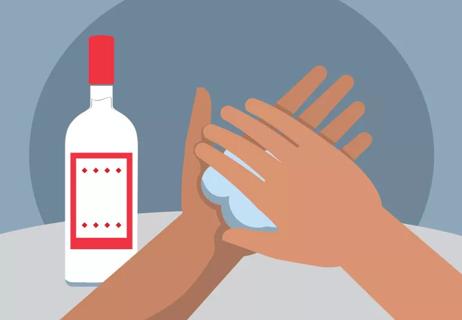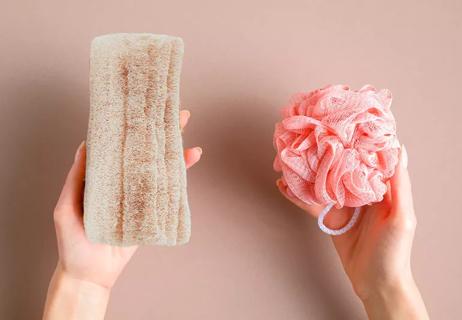Unfortunately, putting your jeans in the freezer doesn’t kill germs, and it definitely doesn’t get them clean
Boyfriend or boot cut, JNCO or apple-bottom: There’s nothing like really great jeans. When you get your hands on a truly dreamy denim, it’s easy to get a little intense about preserving the wash and keeping the fit.
Advertisement
Cleveland Clinic is a non-profit academic medical center. Advertising on our site helps support our mission. We do not endorse non-Cleveland Clinic products or services. Policy
If you look up the manufacturer’s care instructions for your perfect pair, you may find that they recommend against regular washing. Instead, they might advise you to pop those bad boys in the freezer. It kills the germs without damaging the material, they say. The occasional wash is all they need!
But is that really true?
How often should you wash jeans? And can a freezer really do as good a job sanitizing your slim fits as your trusty friends, soap and water? If it can’t, what, besides cold pants, have you been putting on your skin?
Dermatologist Alok Vij, MD, gives us the skinny on keeping your jeans comfortable — and yourself healthy. Spoiler alert: Don’t throw out the leftover lasagna to make extra room for your wide-legged wonders.
Your jeans get exposed to all sorts of stuff in the course of an average day, like:
That debris turns your clothing into a breeding ground for all kinds of bacteria. If you’re washing your clothes, that’s not really a problem. The detergent will kill it.
But what can happen if you aren’t regularly sanitizing your blue jeans?
“Excess bacteria on your skin can cause folliculitis, an acne-like rash on your legs,” Dr. Vij says. In fact, most so-called “butt acne” is actually folliculitis.
Advertisement
But that’s not all. He also warns that you could be exposing yourself to fungal infections.
“Let’s say you have athlete’s foot,” he illustrates. “As you put on your jeans, the fungal organisms get on your pant legs as you pull them up. If you wear those jeans again and again without running them through the wash, you may pass the fungus to your groin or thigh. Now, you don’t just have foot fungus — you’ve got jock itch, too.”
We’ve established that your favorite jeans are playing host to all sorts of germs and debris. Now for the million-dollar question: Can you sanitize your jeans by putting them in your freezer?
“Nope!” Dr. Vij says with a chuckle. “To kill bacteria, you typically have to reach 80 degrees below freezing. Since freezers sit around 0 to 4 degrees, they’re nowhere near cold enough.”
Following that logic train leads you to a decidedly unappetizing conclusion. Not only does putting your pants in the freezer not kill off the nasties, but it also invites said nasties to hang out on your food. No, thanks!
And remember, even if freezing your jeans could kill germs, it wouldn’t make them clean. All the debris they accumulate through daily wear would still be there. And that debris, Dr. Vij explains, is a germ magnet.
“Laundering is the only way to remove the dead skin cells, oils, food and dirt that help bacteria flourish.”
OK, so no more icebox pants. But when your beloved jeans have reached well-worn perfection, you want to preserve the look and feel of the denim. You have to wash them … but how often?
The good news, Dr. Vij says, is you don’t need to wash jeans every time you wear them. “A good rule of thumb is to wash them every two to three wears, as often as you would wash your bras,” he advises.
Dr. Vij also recommends throwing your jeans in the wash when:
Thanks to Dr. Vij, you may now be washing your jeans more often than you used to. But he’s a generous guy, so he’s agreed to share some tips for keeping your jeans clean without blowing the fit and fabric.
First things first: When you wash your jeans, wash them in cold water.
“Cold water helps preserve the fabric better,” he notes. “It also helps reduce the leaching of color. And it’s OK because soaps in laundry detergent are powerful enough to get rid of the bacteria in your jeans without needing hot water.”
For the same reason, it’s fine to wash your jeans on a gentle cycle. It’s important to ensure any debris gets cleared out, so wash your jeans inside out. It’s better for your skin, but it’s also better for the jeans — it preserves the color.
Advertisement
Dr. Vij recommends using mild, unscented laundry detergents, especially if you have sensitive skin. And skip fabric softeners and heavily fragranced products like scent boosters.
But when it comes to drying your beloved blue jeans, the method doesn’t matter.
“Dry is dry,” Dr. Vij says. “But if you leave damp clothing in a humid or warm environment, the bacteria could grow back and thrive.” So, whether you use a tumble dryer, a rack or a line, just make sure your jeans get totally dry. (Side note: If you have seasonal allergies, skip line drying. The clothespins are cute, but they bring the outside in in a big way.)
With proper care, you can rock your favorite pair of denim jeans for years to come, without compromising your hygiene or health.
Advertisement
Learn more about our editorial process.
Advertisement

Leaving footwear on invites germs, bacteria, toxins and other unwanted guests into your home

Some dryers spread germs instead of removing them

Wash your hands, skip the buffet and don’t wash your poultry

The short answer from an infectious disease specialist

Cross contamination is common in the kitchen

While the sponge can become lodged with skin cells (and other gross things), make sure you dry it daily and clean once a week

Reduce the risk of exposing yourself and those you love to germs

Don’t wipe away your clean with a dirty towel

Type 2 diabetes isn’t inevitable with these dietary changes

Applying a hot or cold compress can help with pain